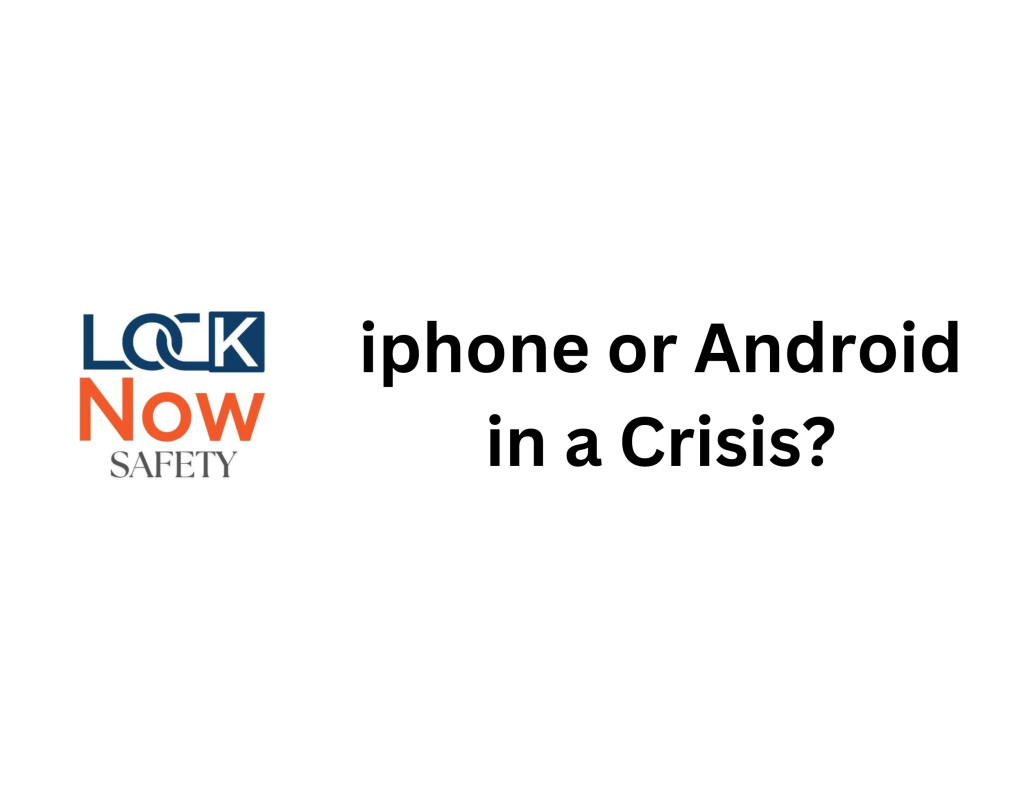Deciding between an iPhone or Android phone? Not sure which one to choose? Undoubtedly, they both have their advantages and disadvantages. However, if you rely on your phone for applications that use emergency alerts or safety, there’s a clear winner and it’s not close.
iPhone
When selecting an iPhone or Android device, one of the most significant differences lies in their operating systems. iPhones run on Apple’s iOS, which is known for its smooth, user-friendly interface and seamless integration with other Apple products like the iPad, MacBook, and Apple Watch. iOS is also praised for its robust security features and timely software updates, ensuring that users have access to the latest features and security patches. Additionally, the App Store is highly curated, which helps maintain a high standard of quality for apps available on iPhones.
Android
On the other hand, Android devices offer a more customizable experience, with a wide range of manufacturers like Samsung, Google, and OnePlus providing various hardware options. Android’s open-source nature allows users to personalize their devices extensively, from changing the home screen layout to installing custom ROMs.
This flexibility is appealing to tech enthusiasts who enjoy tweaking their devices to suit their preferences. Moreover, the Google Play Store offers a vast selection of apps, often with more variety and options compared to the App Store. However, the fragmentation of the Android ecosystem can lead to inconsistent software updates and varying levels of security across different devices. Android push notifications are sporadic due to an inconsistent platform and technology.
Iphone Is the Only Option for Emergency Alerts
When deciding between iPhone or Android devices for emergency and safety purposes, the iPhone stands out as the superior choice. Apple provides a straightforward method for enabling “critical alerts” on the iPhone, ensuring that users can dependably receive these important notifications. While push notifications are generally less reliable than text messages, the iPhone’s system offers a higher level of assurance. In emergency situations, anything less than 100% reliability is unacceptable, and unfortunately, Android devices do not meet this standard.
With years of experience troubleshooting various Android phones, I can confirm that push notifications on these devices are far from reliable. The phone’s behavior is often sporadic; an urgent alert might sound today but fail to do so tomorrow. This inconsistency is a significant concern, especially when it comes to safety-related information. It leaves users feeling uneasy and uncertain about whether they will receive critical alerts when they need them most.
If you don’t need your phone for emergency push notifications at home or work, choosing between an iPhone or Android becomes much simpler. Just pick the phone that best suits your preferences. Android phones offer a wide range of customization options, allowing you to tweak settings beyond what most users typically do. This level of personalization can be very appealing to some users.
iPhone or Android? Do Your Research
Don’t just take our word for it—do your own research. Google “Android notification problems” and see the information for yourself. Many users express frustration over poor push notification performance, and this frustration is even greater when safety is at stake. This website offers 16 fixes! The “how to fix” websites are numerous for android phones. I’ve come across numerous message boards where people are seeking solutions to these inconsistent notifications. Android users are still searching for answers, and I hope they find them someday. Until then, my advice remains: choose an iPhone if you need reliable push notification service.
The technology developers I’ve worked with share the same view in regard to Apple or Android. Their experience often involves improving functionality in one area, only to compromise it in another with Android devices. For instance, a developer once managed to send alerts to an Android phone in silent or do not disturb mode. However, to achieve this, the phone screen had to be on for the notification to appear. It’s a case of one step forward, one step back. If you work in a school system or any environment where safety alerts are crucial, it’s best to avoid Android. For reliable safety notifications, an iPhone is the better choice.

If you have interest in Locknow Active Threat Response Training, click here.
